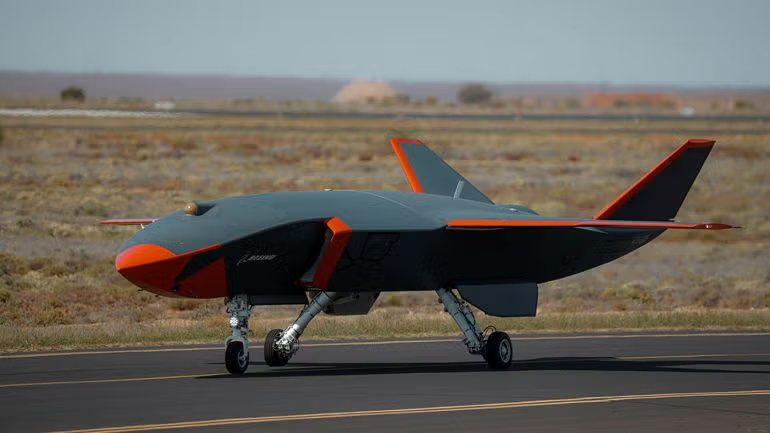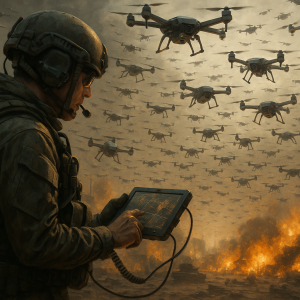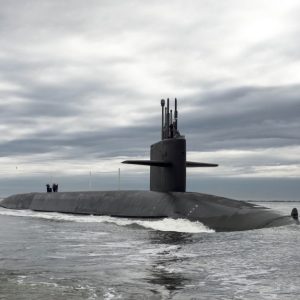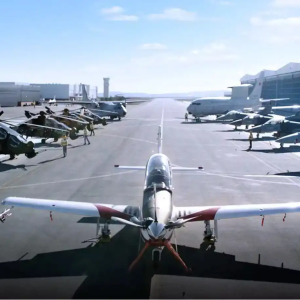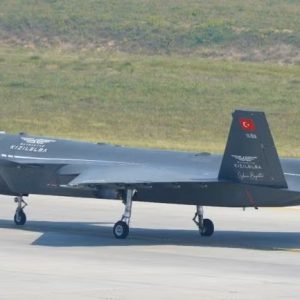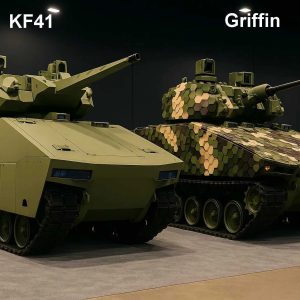MQ-28A Ghost Bat Marks First Delivery, Ushering a New Era in Loyal Wingman Programs
Boeing and the Royal Australian Air Force (RAAF) have achieved a landmark moment in aerospace defence innovation with the official handover of the first MQ-28A Ghost Bat, the country’s first indigenously developed combat drone in over half a century. This milestone signals the operational maturation of the Loyal Wingman concept, aimed at integrating autonomous platforms alongside manned fighter jets in complex combat scenarios.
The event, held at RAAF Base Amberley in Queensland on June 14, 2025, not only marks the transition of the Ghost Bat from prototype to an operational test capability, but also signifies a deepening strategic alignment between Australian defence forces and Boeing Defence Australia. As per the official statement by Boeing, this rollout represents the beginning of “Australia’s first domestically designed and built combat aircraft in more than 50 years.”
Transforming Air Combat with AI and Modular Architecture
The MQ-28A Ghost Bat is designed to fly in formation with crewed aircraft, leveraging artificial intelligence and a modular payload bay to fulfill a variety of mission profiles—from ISR (intelligence, surveillance, reconnaissance) to electronic warfare and air combat support.
At approximately 11.7 meters in length and with a range exceeding 3,700 km, the Ghost Bat’s strength lies in its flexibility and survivability. Its modular nose cone can be rapidly reconfigured depending on mission needs, aligning with contemporary doctrines of multi-domain operations and rapid mission adaptability.
“The handover is more than symbolic,” said AVM Harvey Reynolds of the RAAF. “It signifies our leap into autonomous warfare integration with sovereign capabilities.”
Strategic Implications for Australia and Allied Defence Cooperation
From a geopolitical standpoint, this delivery reinforces Australia’s commitment to enhancing its sovereign industrial base and aligns with the country’s evolving regional posture amid growing Indo-Pacific tensions. The Ghost Bat project is not only a key part of Australia’s air power roadmap but also holds relevance for broader Five Eyes and NATO-aligned nations exploring manned-unmanned teaming (MUM-T) strategies.
As part of the Advanced Capabilities Group within Boeing, the program supports Australia’s Defence Strategic Review 2023, which emphasized integrated force structure and enhanced domestic innovation.
The project, initiated in 2019 under the Loyal Wingman Advanced Development Programme, represents one of the fastest concept-to-reality defence initiatives in Australian history. Over 35 Australian companies have contributed to the supply chain, including BAE Systems Australia, RUAG Australia, and Ferra Engineering—cementing the project’s credentials as a sovereign industrial success.
For insights on Türkiye’s latest AI-powered drone integrations, read our article on Bayraktar Akıncı and Çakır missile tests
Implications for NATO and U.S. Air Combat Integration
While the Ghost Bat is a uniquely Australian development, its architecture is being closely observed by NATO allies, including the United States. The U.S. Air Force’s Collaborative Combat Aircraft (CCA) program shares many design philosophies with the MQ-28A—including modular payloads, reduced radar signature, and human-machine teaming principles.
With Australia’s strategic ties to the U.S. underpinned by the AUKUS alliance and ongoing joint exercises like Talisman Sabre, the Ghost Bat is poised to serve as a benchmark for allied UAV programs.
In a recent joint statement, Boeing Defence Australia CEO Amy List emphasized that “this program not only strengthens Australia’s airpower capability, but also sets the stage for scalable export partnerships with aligned nations.”
Learn more from Boeing’s official release: Boeing MQ-28A Ghost Bat Overview
From Prototype to Operational Evaluation: What’s Next?
Now entering a phase of operational experimentation, the MQ-28A will be evaluated by No. 36 Squadron at RAAF Base Amberley and integrated into broader combat simulations. These will test interoperability with F-35A Lightning IIs and F/A-18F Super Hornets, as well as secure data transfer between manned and unmanned platforms.
Further developments may include swarm coordination capabilities, defensive EW suites, and real-time AI-enhanced threat assessment.
A next-generation command interface is also under development, aiming to allow one human pilot to control up to three Ghost Bats simultaneously through gesture or voice-based command prompts.
Conclusion: Australia as a Vanguard in Combat Drone Sovereignty
The successful transition of the MQ-28A into service is a pivotal point not just for the Royal Australian Air Force, but for all future-forward air forces investing in human-machine teaming and sovereign unmanned combat capability. As Western airpower doctrine evolves in response to high-tech adversaries, projects like the Ghost Bat are defining how nations shape their next-generation deterrence strategies.

